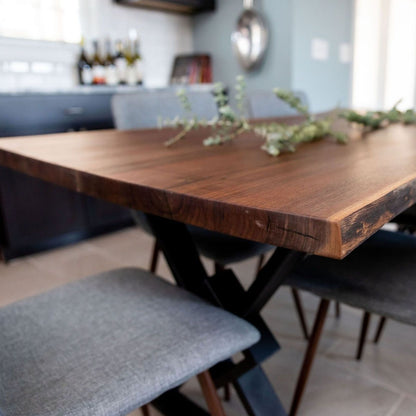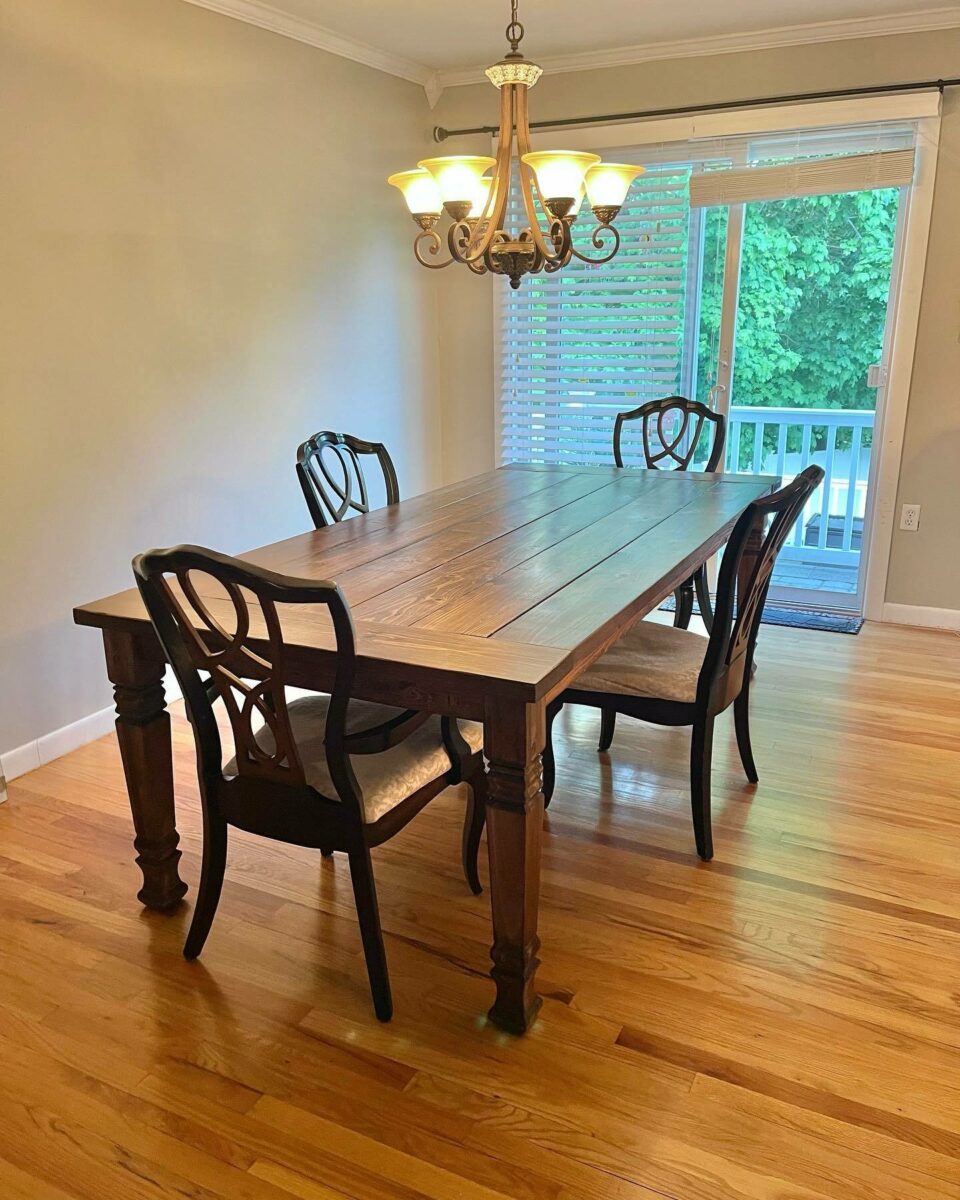How Dining Room Table Legs Can Change the Entire Aesthetic of Your Room
How Dining Room Table Legs Can Change the Entire Aesthetic of Your Room
Blog Article
From Conventional to Modern: Discover the Suitable Dining Area Table Legs for Your Design
While traditional layouts such as cabriole and turned legs stimulate a feeling of timeless elegance, modern designs like hairpin and geometric choices offer a chance for striking visual interest. As you take into consideration these elements, the question continues to be: just how can you flawlessly integrate these diverse leg styles to create an unified dining experience?
Comprehending Table Leg Styles
The variety of dining-room table leg styles can dramatically influence both the appearances and performance of the space. Each leg style adds distinct aesthetic elements and functional functions, catering to diverse design choices and usage needs. Recognizing these designs is critical for choosing the best table that straightens with your total interior decoration vision.
As an example, tapered legs provide a tidy, timeless look that can enhance a space's style, while stand bases give stability and maximize legroom, making them ideal for smaller sized spaces. Barrette legs, a characteristic of mid-century modern-day layout, introduce a commercial style, enabling a ventilated, open feeling. Trestle legs evoke rustic beauty, giving durable assistance and a feeling of eternity.
Wood legs can bring warmth and structure, whereas steel options usually share a sleek, modern ambiance. Ultimately, understanding table leg styles is vital for creating a natural dining area that mirrors individual style while guaranteeing functionality and comfort.
Traditional Table Leg Options
When choosing eating room table legs, conventional choices often symbolize ageless style and workmanship. These styles mirror a rich heritage and a commitment to quality, making them perfect for those who appreciate traditional looks.
One of the most iconic standard leg designs is the cabriole leg, characterized by its graceful curved form. This design often features ornamental carvings and is most frequently located in Queen Anne and Chippendale furnishings. An additional preferred option is the turned leg, which boasts a collection of smooth, rounded shapes that provide a timeless appearance while keeping stability.
In addition, the straight leg, while basic, supplies a durable and unadorned framework that can mix seamlessly with a range of tabletop styles. For those drawn to ornate outlining, claw-and-ball feet legs stimulate a sense of magnificence and can function as a spectacular focal point in any type of dining area.
Lastly, pedestal bases, although not strictly legs, offer an alternative conventional option that enables for adequate legroom and can be beautifully sculpted. Each of these conventional leg styles contributes to the overall setting of a dining-room, weding feature with aesthetic allure.

Modern Table Leg Styles
Modern table leg layouts provide a varied variety of styles that stress cutting-edge products and clean lines. These layouts typically focus on capability while functioning as striking prime focus within a dining room. Minimalist aesthetics are prevalent, with legs crafted from products such as metal, glass, and crafted wood, which add to a ventilated and modern feel.
One preferred layout is the hairpin leg, identified by its slender, tapered framework that gives security without frustrating the tabletop (dining room table legs). This style is often located in mid-century modern-day imp source furniture and can effortlessly complement various table forms. An additional trend is making use of geometric forms, where legs may tackle angular or unbalanced forms, including visual interest and a touch of virtuosity

Blending Designs for Unique Spaces
Usually, house owners seek to develop distinct dining rooms that show their personal style by mixing numerous design elements. This technique allows for the incorporation of varied visual appeals, causing a harmonious yet distinct setting. For example, combining a rustic wooden table with streamlined, modern-day steel legs can produce an eye-catching comparison that elevates the space's general appeal.
In addition, integrating vintage table legs with contemporary table tops can evoke a feeling of history while preserving a contemporary perceptiveness. Such combinations not just display individual preference yet likewise urge imagination, enabling homeowners to curate a room that really feels both individual and try these out welcoming.
Color plays a critical function in this mixing process; choosing table legs that match or comparison with the existing color design can improve aesthetic interest. As an example, whitewashed legs can soften the boldness of check this site out a dark table surface, creating a well balanced aesthetic.
Tips for Picking the Right Legs
Choosing the right table legs is essential for accomplishing both capability and visual charm in your eating space. Begin by thinking about the total design of your space. Typical settings gain from legs that include detailed carvings or turned designs, while modern rooms might ask for sleek, minimalist designs.
Following, evaluate the height and security of the legs. dining room table legs. Typical table range between 28 to 30 inches in height, so ensure the legs match this measurement for convenience. In addition, durable products, such as wood or steel, can enhance security and durability
Assess the leg form also-- options include directly, tapered, or pedestal layouts. Straight legs supply a timeless appearance, while conical legs can include a touch of beauty. Pedestal bases give ample legroom and are excellent for smaller sized areas.
Verdict
In recap, picking the ideal dining-room table legs needs careful consideration of both modern and standard styles. Traditional options such as cabriole and transformed legs supply ageless elegance, while contemporary styles like hairpin and geometric forms give a modern touch. By integrating leg design, height, and material with the total décor, a cohesive and inviting environment can be accomplished. Ultimately, the picked table legs must show the preferred aesthetic, improving the eating experience within the room.
The variety of dining room table leg designs can substantially influence both the visual appeals and capability of the room. Eventually, understanding table leg designs is vital for creating a cohesive dining location that reflects individual design while ensuring functionality and convenience.One of the most renowned traditional leg styles is the cabriole leg, characterized by its elegant curved shape. Straight legs use a classic look, while conical legs can add a touch of style.In summary, picking the perfect eating space table legs calls for careful factor to consider of both conventional and modern-day styles.
Report this page